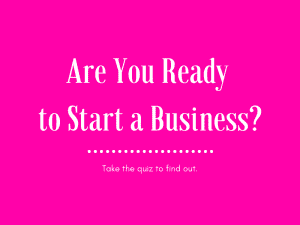Are you a woman looking to start a small business? Congratulations! You’re about to join the ranks of 1.1 million other women-owned businesses in the United States.
While that number is certainly impressive, we can always use more female entrepreneurs in the business sector.
If your start up costs are high, getting your business off the ground might require a loan. Unfortunately, when women apply for loans, they are statistically less likely to get approved for the loan or receive only a portion of what they asked for when compared to their male counterparts.
Fortunately, to combat the extra hurdles women have to overcome when starting a business, there are quite a few small business loans for women available to check out!
Types of Loans
Before you decide what lender works best for your business, you need to learn about the different loan options available. Each type works best for different situations and different industries, so take into account what your business needs when weighing your options.
- Term Loan: A term loan is probably the traditional option you think of when considering loans. After filling out your loan application, you get a lump sum that you pay off with interest. This works well when you need start-up capital to get your business off the ground.
- Invoice Factoring: This type of loan is most effective for businesses that have large expenses to complete a job, such as a construction company. The factoring company pays the invoice you would normally send to the client upon completion of the job, so you get the money up front, rather than after the job is completed. This allows you to pay for the raw materials that you may not otherwise have the capital for. At the end of the job, the client gets an invoice from the factoring company rather than your own company.
- Line of Credit: This type of loan is most similar to the way a traditional credit card works. Interest rates are higher, but you only pay for the money you spend on the revolving credit lines, rather than a lump sum you may not use in full.
- Cash Advance: This type of loan is best suited for a business experiencing an unexpected setback in cash flow. You can use this cash advance to cover payroll or any other necessary expenses you need to pay to keep the business moving. You pay this loan back as a percentage of each day’s earnings until the loan is repaid. The interest rates are higher, but since the structure of the loan helps it get paid off more quickly, it may not cost as much in the long run.
- Purchase Order Financing: This loan works best if you have a huge order coming in and you don’t have the resources to fulfill it. Instead of declining the order because you can’t pay for the materials or employees, the loan firm will pay for the value of the order and then take their percentage once the client pays for the order in full.
Small Business Loans for Women
Now that you have an understanding of the different structures of loans available, let’s take a look at the small business loans made available to women.
Small Business Administration Loans
The Small Business Administration (SBA) is a federal agency that gives small businesses the tools to succeed through capital, counseling, and contracting expertise. They don’t hand out any of the loans themselves, but they use their network of lending partners to find you the loan that works best for you and your business.
The SBA has a special department called the Office of Women’s Business Ownership (OWBO) that specifically works with women business owners to help them succeed.
To make it easy to find the loan that is perfect for you and your business, the SBA has a Lender Match tool for you to input your information and find the lenders that are the best fit for you.
Funding Circle
Another type of loan available through the SBA is called the Funding Circle. It’s a federally backed system where small businesses can borrow money through a peer-to-peer lending system. This system of alternative lenders can be a beneficial method for some businesses; the interest rates are lower than you would find at a bank, and individuals are able to make a return on investment as the lenders, rather than a corporation.
Unfortunately, if you’re a really small business, this type of loan won’t work for you, as the minimum annual revenue required to apply is $400,000.
ACE SBA Women’s Business Center
An additional resource for women in Georgia through the SBA is the Women’s Business Center. They not only offer loans but other invaluable resources for women business owners such as:
- Workshops and Business Series
- Lunch & Learn Virtual Presentations
- One-on-One Business Consultations
- Hispanic Entrepreneurship Series
- Access to On-Demand Webinars. (Multiple business topics)
- Information about “Ten Steps to Start a Business”
- Information about Access to Capital and Loan Products
- Online Business Education Platform & Business Plan Generator
- ACE Annual Speed Coaching
- Annual Minority Business Expo
- Women-Owned Small Business Cohort Series
- Connections to other resources
Not only will you get the capital to begin your business, you also have access to the best practices on how to invest and use the loan you applied for. They offer microloans from $15,000 to $50,000.
If you are not located in Georgia, you can try finding an SBA lender local to your state. An institution in your area will best understand the needs and legalities of a business operating within your state.

Best Practices for Loan Program Applications
Once you’ve found an in-person or online lender you feel will best suit your needs, it’s time to put together your application.
When getting ready to apply, you must:
- Make sure you meet their criteria. Check to make sure you meet your threshold for their minimum annual revenue and that you have at least the minimum credit score. If you apply without making sure you meet the base qualifications, you’ve just wasted your time and the application fee.
- Gather all your legal and financial documents. Make sure you have all your paperwork handy before you begin the process. The lender will need documents such as your:
- Driver’s license
- Business and personal bank statements
- Business licenses
- Lease paperwork
- Articles of incorporation
- Your resume of your pertinent business experience
- Income statement and balance sheets
- Financial projects based on your current trajectory and more.
- Put together your business plan. People deciding whether or not to invest in your company want to see that you have a clear picture of where your business is headed and a solid plan to get there. You must be organized, realistic, and specific, including important features such as SWOT goals and industry analysis.
- Determine your collateral. SBA loans above $25,000 require collateral, which is an item of value that can be seized in the event that you cannot pay back your loan. Be careful when selecting this item, and if you’re unsure of your options, it might be best to consult a lawyer or choose a loan that does not require collateral.
You Got This!
Researching and applying for a loan can be scary and overwhelming, especially when you consider the fact that women have to work twice as hard to secure the same loan as a man. But the more time you invest in your research and perfecting your business plan, the more prepared you’ll be to prove to potential investors that you have what it takes to use their money and grow your business so you both can profit together.
Published in Business, Featured ArticlesAuthor, Artist, Photographer.
Sarah Margaret is an artist who expresses her love for feminism, equality, and justice through a variety of mediums: photography, filmmaking, poetry, illustration, song, acting, and of course, writing.
She owns Still Poetry Photography, a company that showcases her passion for capturing poetic moments in time. Instead of poetry in motion, she captures visual poetry in fractions of a second, making cherished keepsakes of unforgettable moments.
She is the artist behind the Still Poetry Etsy shop, which houses her illustrations and bespoke, handmade items. She is the author of intricacies are just cracks in the wall, a narrative poetry anthology that follows a young woman discovering herself as she emerges from an abusive relationship.





